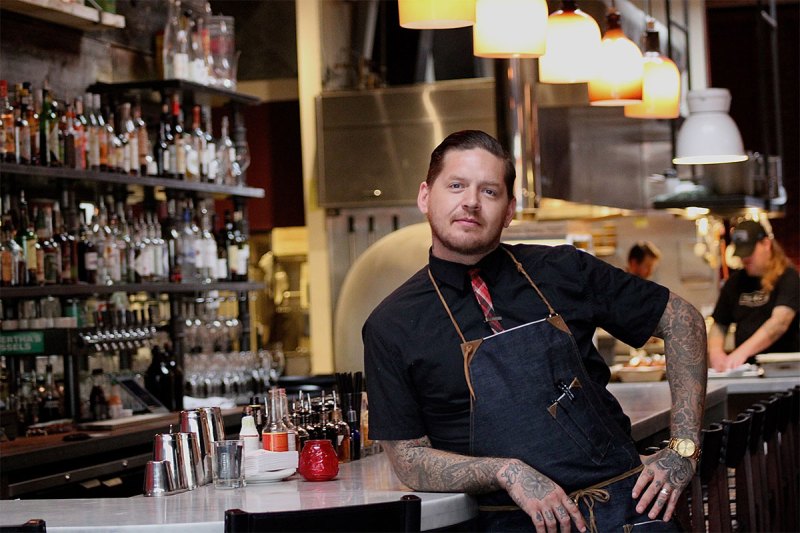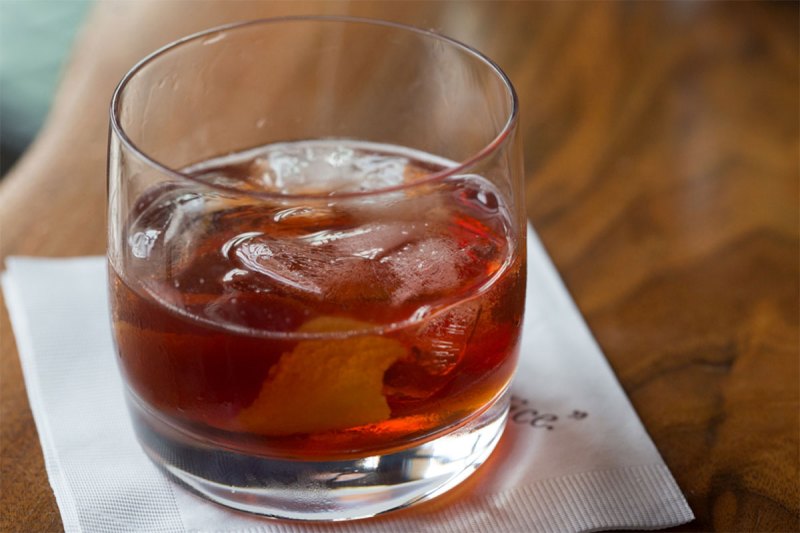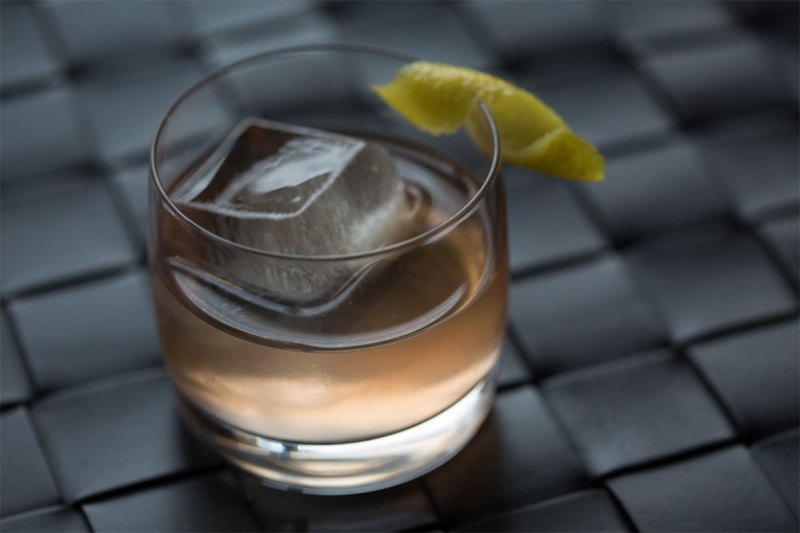As the craft bartending trend kicks into overdrive, some professional bar men and women have decided to take a step back.
Instead of an eight-ingredient drink with numerous obscurities, many are favoring simple classics with one or two twists.

At Trifecta Tavern in Portland, bar manager Colin Carroll takes advantage of his kitchen’s wood-fired oven and access to raw materials like wood and spices to spin out fresh takes on old drinks. I took a seat at his bar to learn more about his process and why he’s known as one of the best in town.
I started with the Charred Orangewood Alaska #1, which lies somewhere between a negroni and a martini. As I dive into the gin-based cocktail, Carroll discusses his hospitality background, getting his start at Elixir in San Francisco. “In a matter of weeks, I had moved from bar-back to bartender,” he says. He honed his chops at the well-known craft bar for a couple of years before moving north.
Getting back to the drink, it earns its name from a wood-charred orange peel that spritzes after the fino sherry, chartreuse and
As he builds the second drink on Trifecta’s handsome granite bar, Carroll and I start chatting about the complexity of today’s modern cocktail menu. “Combining obscure spirits doesn’t make sense anymore,” he says. He believes his customers prefer new, unexpected flavors in ingredients they already know and enjoy.

One of his most popular drinks (and testament to his philosophy) is a cow bone marrow Manhattan where the bourbon is infused with the most delicious of gelatinous substances. This led to the second cocktail of my night: the Smoked Marrow Vieux Carré. Carroll infuses rye whiskey with the same bone marrow and it’s a knockout. Super neutral on the nose, notes of everything else come out one at a time. The bitters are clean, the Benedictine and Dolin Rouge are fresh and the cognac provides a hint of luxury sip after sip.
“The owner (Ken Forkish of Ken’s Artisan Bread) has really given us carte blanche to experiment at the bar,” he says. This is the type of environment where Carroll thrives. With access to a full spice rack in the kitchen and a variety of smoking woods a short walk away at Sheridan Fruit Co.’s butcher counter, he’s built a great program off plenty of trial and error. “There were a few times when something sounded great on paper, but in the glass, it was horrible,” he concedes, laughing.
But when Carroll and his bar team get it right, it’s a stunner. The third and final drink of my night wasn’t originally planned, but I couldn’t say no to his take on a White Russian. He developed a coffee amaro using Ristretto Roasters beans and cold brews it in the same way as its caffeinated counterpart. The finished product is so simple: The amaro is poured over ice, then filled with cream in front of the awaiting patron. It’s a brilliant way to close out a night and brings together Carroll’s philosophy with his expectation for superior customer service at a bar that just wants to serve you consistently great drinks.

For a barman and bar with a big imagination, there’s little fuss. At the end of the night Carroll will go home and spend time with his wife and kids. It’s clear he values balance and that definitely shows at his bar. Count me in on this back-to-basics movement – the drinks are great and we’ll all imbibe better because of it.


